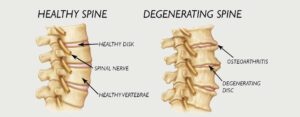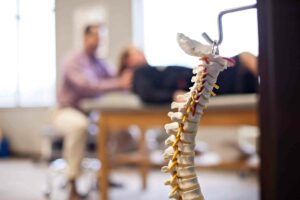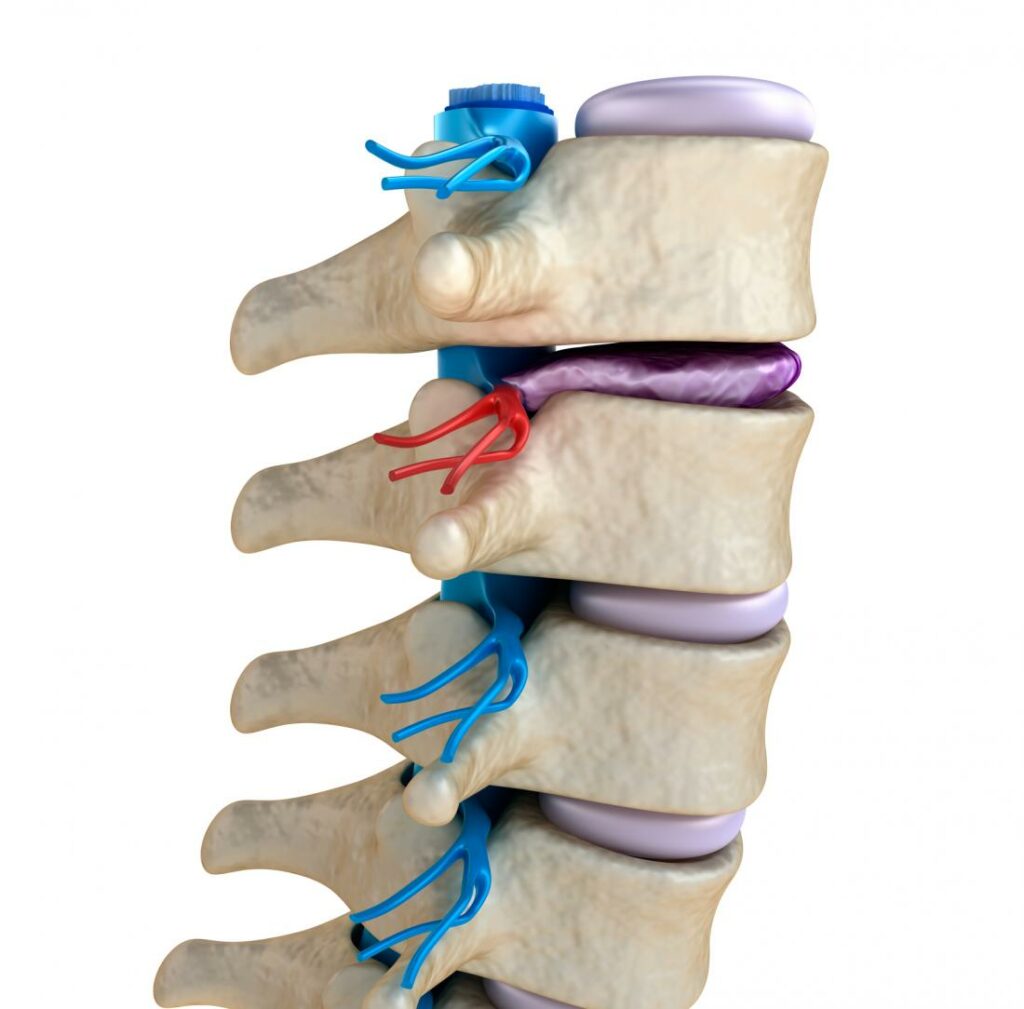DDD is a serious condition that can cause a lot of pain and discomfort for those who suffer from it. It can be difficult to diagnose, as there are many different symptoms that can point to degenerative disk disease. In this blog post, we will discuss what DDD is, the symptoms of DDD, and how you can treat it!
Contents
What Is DDD?
 DDD refers to degenerative disk disease which is a condition that often affects older adults. It is caused by the disks in your spine slowly breaking down and losing their ability to cushion your spine and absorb shocks. This can lead to pain, stiffness, and other symptoms. It is often believed that DDD is caused by wear and tear from aging but it can also be caused by other things.
DDD refers to degenerative disk disease which is a condition that often affects older adults. It is caused by the disks in your spine slowly breaking down and losing their ability to cushion your spine and absorb shocks. This can lead to pain, stiffness, and other symptoms. It is often believed that DDD is caused by wear and tear from aging but it can also be caused by other things.
According to studies, it is estimated that around 35% of adults over the age of 60 have some degree of disk degeneration. Disk degeneration is a normal part of aging but it can be accelerated by other factors such as obesity, smoking, and repetitive motions.
This is usually described as “wear and tear” on the disks but there is still much debate about what causes it. If you have risk factors for disk degeneration, you may be more likely to develop the condition. However, it is not yet known if these risk factors actually cause the disks to degenerate or if they are just associated with the condition.
Types
There are two main types of disk degeneration:
1. Degenerative Disk Disease (DDD)
2. Spondylosis
DDD is the most common type of disk degeneration. It occurs when the disks in your spine begin to break down and lose their ability to cushion your spine and absorb shocks. This can lead to pain, stiffness, and other symptoms.
Spondylosis is a less common type of disk degeneration. It occurs when the disks in your spine become hard and brittle. This can also lead to pain, stiffness, and other symptoms.
Therefore, if you are struggling with DDD, you may want to consider seeking out treatment options to help ease your symptoms and improve your quality of life.
What Are Some Symptoms?
 It might not be easy to identify degenerative disk disease in its early stages because the symptoms are often mild. But as DDD progresses and the disks become more damaged, you might experience pain and other problems.
It might not be easy to identify degenerative disk disease in its early stages because the symptoms are often mild. But as DDD progresses and the disks become more damaged, you might experience pain and other problems.
The most common symptom of degenerative disk disease is lower back pain. You might feel this pain when you:
- Bend over or twist your torso
- Lift something heavy
- Sit or stand for long periods of time
Other symptoms might include:
- Leg pain (sciatica) that radiates from your low back to your buttocks, thighs, calves, and feet
- Numbness, tingling, or weakness in your legs or arms if the nerve root is compressed
- A sensation of “electrical shocks” going down your legs
- Difficulty standing up from a seated position or walking upstairs
- Stiffness in your back
These are some other problems that might develop as DDD gets worse:
- Inability to perform certain motions due to pain
- Muscle weakness from not moving
- Generalized fatigue
- Sleep problems
- Depression
If you have any of these symptoms, talk to your doctor. He or she can help you determine whether degenerative disk disease is the cause and, if so, what treatments might be helpful.
What Causes Degenerative Disk Disease (DDD)?
There are many things that can lead to the development of DDD. The most common is the aging process. As we age, the disks in our spine begin to deteriorate and lose their cushioning ability. This can be aggravated by things like poor posture, obesity, smoking, and repetitive motions.
Other causes of DDD include:
- Trauma: A fall or other injury can cause the disks to rupture or bulge.
- Infection: Infections in the spine can lead to inflammation and damage to the disks.
- Tumors: Tumors growing on or pressing against the spine can cause degeneration of the disks.
- Congenital abnormalities: Some people are born with abnormalities in their spine that can lead to DDD later in life.
All in all, these are a few of the things that can lead to DDD. You should understand what DDD is and how it might impact your life if you have it. If you think you might have DDD, make sure to talk to your doctor. They will be able to give you a more complete picture and help you develop a treatment plan.
How Is It Diagnosed?
 The diagnosis is not always easy. Your doctor will want to rule out other possibilities, such as irritable bowel syndrome (IBS) or inflammatory bowel disease (IBD). To do this, you may have:
The diagnosis is not always easy. Your doctor will want to rule out other possibilities, such as irritable bowel syndrome (IBS) or inflammatory bowel disease (IBD). To do this, you may have:
- A physical exam
- Blood tests
- Stool tests
- An imaging test, such as an MRI or CT scan
- A colonoscopy or sigmoidoscopy (a type of endoscopy)
Your doctor may also ask about your medical history and symptoms. Be sure to tell your doctor about your family’s medical history. These tests are usually done over a period of weeks or months. Each test is done to rule out other conditions.
If you have DDD, your doctor will work with you to develop a treatment plan. With an accurate diagnosis, you can get the treatment you need to improve your quality of life.
What Are Some Treatment For DDD?
There are a number of ways to treat DDD, and the most effective approach depends on the severity of your symptoms. If you have mild symptoms, you may be able to treat the condition at home with simple self-care measures, such as:
- Taking over-the-counter pain relievers, such as acetaminophen or ibuprofen, to relieve pain and inflammation
- Applying heat or ice to the affected area
- Taking regular breaks during extended periods of sitting or standing
- Wearing comfortable, low-heeled shoes
- Exercising regularly
If your symptoms are more severe, or if home treatment doesn’t seem to be helping, you may need to see a doctor for more-aggressive treatment. Treatment options for DDD may include:
- Corticosteroid injections can help reduce pain and inflammation
- Physical therapy, which may help improve your range of motion and relieve pain
- Weight loss, if you’re overweight or obese
- Acupuncture can help relieve pain
- Surgery, in some cases, such as when you have a herniated disk or bone spurs, your doctor may recommend surgery to relieve your symptoms.
DDD is a degenerative condition, which means that it will usually get worse over time. However, with the right treatment, you can help manage your symptoms and improve your quality of life.
Just make sure to see a doctor if your symptoms are severe or if you’re having trouble managing the pain on your own. Because DDD is a degenerative condition, it’s important to catch it early and start treatment right away to prevent further damage.
Conclusion
To conclude, DDD is a serious medical condition that can be effectively treated with the help of a qualified physician. It is often confused with other medical conditions, but it is important to get an accurate diagnosis so that you can receive the proper treatment. If you think you may have DDD, be sure to see a doctor as soon as possible. With the right treatment, you can live a full and healthy life.
Physical Therapy help patients recover from pain. If you’re experiencing Back pain, Shoulder pain, Knee pain, Neck pain, Elbow pain, Hip pain, or Arthritis pain, a physical therapist at MantraCare can help: Book a physiotherapy session.


